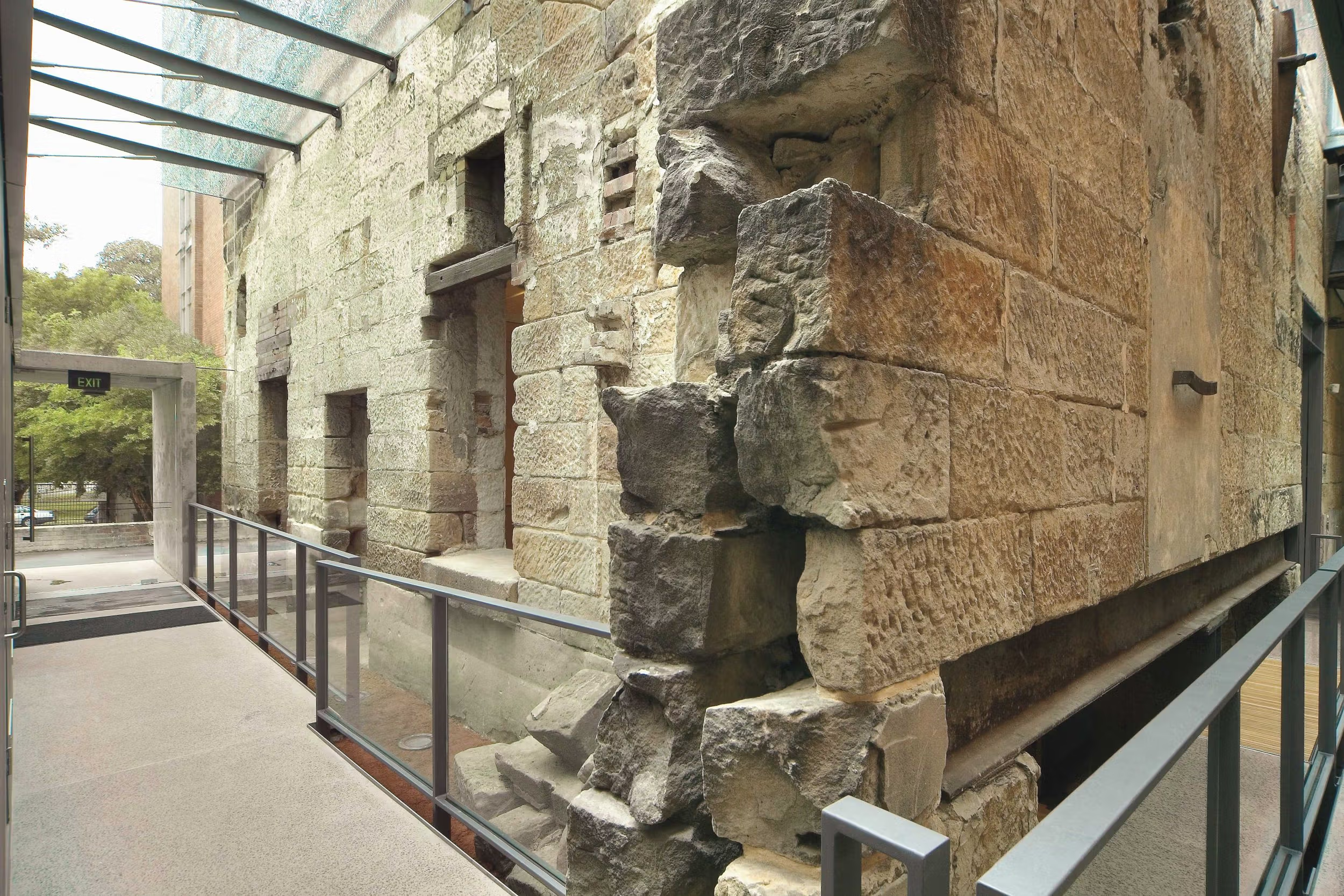Conservation in action: the Vaucluse House turrets
The conservation of the 1830s stone turrets on the west side of Vaucluse House is an impressive example of the continuing use of traditional craftsmanship and local materials.
Barrister and politician William Charles Wentworth acquired Vaucluse estate in 1827. Over the next ten years he extended the existing stone cottage, built in 1805, adding a dining room, bedrooms and drawing room. During the 1830s and 40s, exterior detailing in the fashionable Gothic Revival style was added to the west section of the house. Based on Sydney’s newly built Government House, it included mullioned windows, two corner turrets and stepped battlements.
Today, Vaucluse House is one of the oldest surviving domestic Gothic Revival buildings in Australia. The west side of the villa, overlooking Sydney Harbour, presents some of the most striking architectural elements of the estate. Standing around 30 metres above ground level, the beautiful turrets and battlements, built in gleaming Sydney yellow-block sandstone, would have been visible from any vessel arriving in or leaving the colony, showcasing Wentworth’s wealth and status.
Years of exposure
Continuing our efforts to preserve the highly significant sandstone of the estate, last year we undertook a detailed aerial survey and discovered that two small figs had been slowly growing in the mortar joints at the top of the turrets, displacing the stone pieces and rendering them unstable. The stone surfaces had also suffered many years of erosion from the salt-ridden air of the harbour.
As part of our 2020–21 capital maintenance program, the Heritage Team embarked on the delicate task of conserving the turrets by removing the figs and replacing the sections of badly decayed stone. We engaged specialised structural engineers, stonemasons and conservators to source the best available sandstone and develop a traditional mortar to replicate the original design and construction methods.
A new lease of life
In July 2020, an intricate scaffold containing a gantry system was built over the roof of the house to allow for close inspection, the removal of all deteriorated stone, and the lifting of more than 3 tons of new stone to reconstruct the two turrets.
Stonemasons meticulously carved individual pieces for the new merlons (upright sections) and capping stones using material selected for its strength, durability and appearance and sourced from the Minister’s Stonework Program, a NSW Government initiative set up in 1991 to manage significant stonework in the state. Mortar was made using lime produced by burning oyster shells from Sydney Harbour. This method was widely used in the early colony, and evidence of this can still be found in the house.
Finally, the turrets were capped with beautifully moulded lead and strengthened with steel strappings and pins. These will stabilise the turrets and protect them from the weather and intrusive wildlife and plants, ensuring their preservation for the next 100 years or more.
As well as using authentic local materials, the conservation of the turrets is distinguished by expert craftsmanship and the use of traditional construction methods, reminding us of the need to support and foster the development of these skills in younger generations.
Project team
- Stonemasons: Artisan of Stone Pty Ltd
- Leadwork: Classic Roofing Pty Ltd
- Structural engineers: Partridge Structural Pty Ltd
- Stone conservator: Adriel Consultancy Pty Ltd
Published on
Related

Conservation in action: Meroogal exterior painting 2025
At Meroogal, the ongoing conservation of the beautiful timber detailing of the Juliet balconies, the bargeboards and fascia boards of the gables, weatherboards and masonry chimneys requires specialist knowledge and skills

Conservation
Conservation in action: Vaucluse House waterfall, ponds and rill
The Vaucluse House Waterfall, Ponds and Rill Conservation Project will preserve the integrity and heritage significance of these important features of the estate. It was made possible by the generous support of the F&K De Angeli Foundation

Conservation
Conservation in action: Vaucluse House ancillary buildings remediation
Museums of History NSW (MHNSW) is currently undertaking essential conservation works on the 1830s former store, laundry and water tank at Vaucluse House

The Mint project: Sydney’s adaptive reuse triumph
Sydney’s urban landscape is a testament to both the city’s rich history and examples of forward-thinking vision. Among the most compelling examples of this fusion of past and future is the revitalisation of the Mint complex
